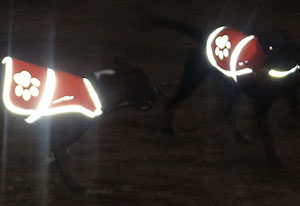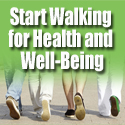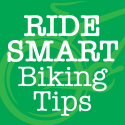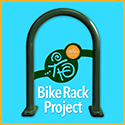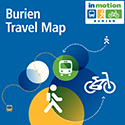by Maureen Hoffmann, WABI President.
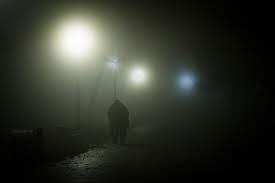 As we all “fall back” and change our clocks this weekend, I think about it now getting dark earlier in the afternoon, and the dark season ahead of us. As a friendly reminder, I’m reposting this article from last year.
As we all “fall back” and change our clocks this weekend, I think about it now getting dark earlier in the afternoon, and the dark season ahead of us. As a friendly reminder, I’m reposting this article from last year.
These long winter days are short on light, so most of us find ourselves going to and from work, running errands and walking the dog at dusk or in the dark. Crossing the street. Walking through the parking lot. Heading up the sidewalk. Hugging the lane edge on a bike. How visible are you?
It’s because of my efforts with WABI that I’ve become even more keenly aware of pedestrians and cyclists… more than I ever was before. I can’t tell you how many times I’ve seen someone crossing the street on a rainy night wearing a dark jacket, pants and shoes. Or the cyclists I’ve seen on dark bikes, wearing dark clothes with no lights or reflectors. Don’t they realize they’re invisible?! There’ve been times it’s been just a backlight, or the flash of a white, plastic grocery bag, or small, reflective decorations on shoes that have made the pedestrian or cyclist apparent in the dark.
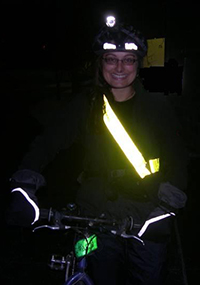 Pedestrians & Cyclists:
Pedestrians & Cyclists:
Make Yourselves Visible!
- KNOW that it’s hard to see you,
so walk and ride with extra caution. - Choose light-colored clothing when possible.
- Choose a well-lit route.
- Use a white umbrella instead of black.
- Wear shoes and clothing with reflective details.
- Wear reflective vests and flashing lights when you’re out for a walk or ride.
- Be sure that you’re seen. Wave your arms if you have to… the motion will get attention.
- Teach your kids to be aware of their own visibility and dress them accordingly.
- Put reflective gear on your dog, too.
- Cyclists are REQUIRED by WA. State Law to have proper lights and reflectors:
Motorists: LOOK for Pedestrians and Cyclists! SEE Them.
- As you approach a crosswalk or intersection, slow down and
carefully scan for anyone crossing or waiting to cross. - When moving through parking lots, drive slowly and
watch for shoppers passing in and out between cars. - Watch for and give room to cyclists sharing the road or using the bike lanes.
- When it’s late afternoon, and light is just beginning to wane, turn your headlights on.
You and your car will be more visible, too!
Community safety is in the hands of each and every one of us. SEE and BE SEEN.
Last year, reader Katherine wrote in with her helpful suggestions:
I also like Amphipod lights. They are super lightweight little lights surrounded by reflective material that come in a magnetic clip style or as a band for around your ankle or arm, or in the case of my little niece as a necklace.
Another great product is a “spur” that slips onto the heel of your shoe. Studies have shown that drivers tend to have a lower looking field at night so the best place for your lights is down low and to use colors other than white. A white or clear light, like a flash light held at waist level is better than nothing, but will disappear into headlights of an oncoming car. A good rule of thumb is to wear reflective gear on your body and lights high and low.
If you want to try before you buy, venture up to West Seattle Runner, they have a large selection to choose from.
Questions?
For questions, comments and suggestions, please contact:
Maureen Hoffmann at info@wabiburien.org
– –
Thanks to Transportation Nag for the use of the photo
of the dark-clothed pedestrian on the stormy night.
